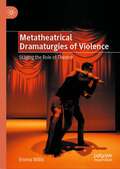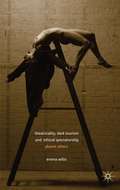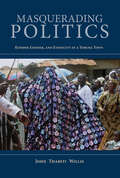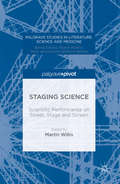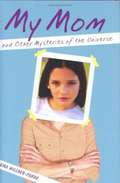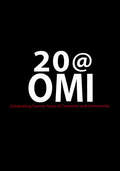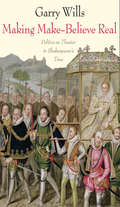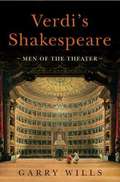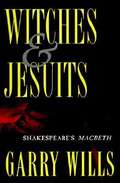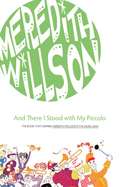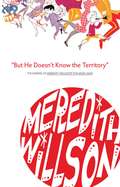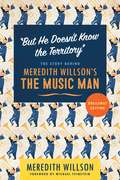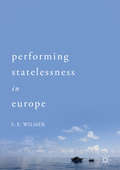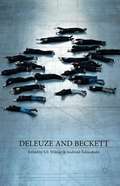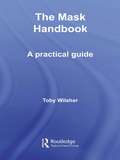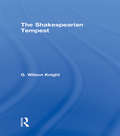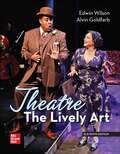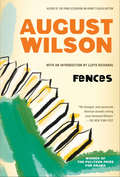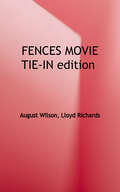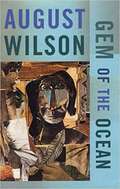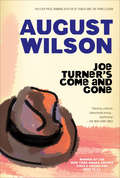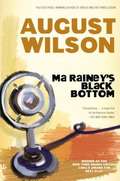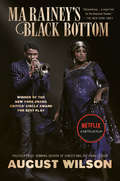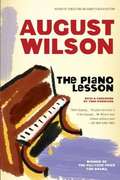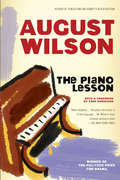- Table View
- List View
Metatheatrical Dramaturgies of Violence: Staging the Role of Theatre
by Emma WillisThis book examines a series of contemporary plays where writers put theatre itself on stage. The texts examined variously dramatize how theatre falls short in response to the demands of violence, expose its implication in structures of violence—including racism and gender-based violence—and illustrate how it might effectively resist violence through reconfiguring representation. Case studies, which include Jackie Sibblies Drury’s We Are Proud to Present and Fairview, Ella Hickson’s The Writer and Tim Crouch’s The Author, provide a range of practice-based perspectives on the question of whether theatre is capable of accounting for and expressing the complexities of structural and interpersonal violence as both lived in the body and borne out in society. The book will appeal to scholars and artists working in the areas of violence, theatre and ethics, witnessing, memory and trauma, spectatorship and contemporary dramaturgy, as well as to those interested in both the doubts and dreams we have about the role of theatre in the twenty-first century.
Theatricality, Dark Tourism and Ethical Spectatorship
by Emma WillisTheatricality, Dark Tourism and Ethical Spectatorship: Absent Others builds upon recent literature concerning theatre and ethics and offers a uniquely interdisciplinary approach. With a focus on spectatorship, the book brings together analysis of dark tourism – travel to sites of death and disaster – and theatrical performances. At dark tourism sites, objects and architecture are often personified, imagined to speak on behalf of absent victims. Spectatorsare drawn into this dialogical scenario in that they are asked to 'hear' the voices of the dead. Theatrical performances that depict grievous histories often gain power through paradoxically demonstrating the limits of their representational ability: spectators are asked to attune themselves to absences and incomprehensibilities. This study asks whether playing the part of the listener can be understood in ethical terms. Sites surveyed span a broad geographical scope – Germany, Poland, Vietnam, Cambodia, New Zealand and Rwanda – and are brought into contrast with performances including: Jerzy Grotowski's Akropolis, Catherine Filloux's Photographs from S21, Adrienne Kennedy's An Evening with Dead Essex and Erik Ehn's Maria Kizito.
Masquerading Politics: Kinship, Gender, and Ethnicity in a Yoruba Town
by John Thabiti WillisIn West Africa, especially among Yoruba people, masquerades have the power to kill enemies, appoint kings, and grant fertility. John Thabiti Willis takes a close look at masquerade traditions in the Yoruba town of Otta, exploring transformations in performers, performances, and the institutional structures in which masquerade was used to reveal ongoing changes in notions of gender, kinship, and ethnic identity. As Willis focuses on performers and spectators, he reveals a history of masquerade that is rich and complex. His research offers a more nuanced understanding of performance practices in Africa and their role in forging alliances, consolidating state power, incorporating immigrants, executing criminals, and projecting individual and group power on both sides of the Afro-Atlantic world.
Staging Science: Scientific Performance on Street, Stage and Screen (Palgrave Studies in Literature, Science and Medicine)
by Martin WillisThis book considers scientific performances across two centuries, from the early nineteenth century to the present day. Performances include demonstrations of technologies, experiments that look like theatre, theatre that looks like science, tourist representations and natural history film-making. Its key aim is to open debate on how scientific activity, both historical and contemporary, might be understood in the context of performance studies and the imaginative acts required to stage engaging performances.Scientific performances have become increasingly of interest to historians of science, literature and science scholars, and in the field of science studies. As yet, however, no work has sought to examine a range of scientific performances with the aim of interrogating and illuminating the kinds of critical and theoretical practices that might be employed to engage with them. With scientific performance likely to become ever more central to scholarly study in the next few years this volume offer a timely, and early, intervention in the existing debates, and aims, too, to be a touchstone for future work.
My Mom and Other Mysteries of the Universe
by Gina Willner-PardoWhen her parents go away for a month-long business trip, Arlie Metcalfe and her little brother, Michael, get to stay with their fun-loving aunt, Isabel. It seems as if it's going to be a month-long vacation, particularly for Arlie, who's looking forward to the time away from her demanding mother. But only a few days into the trip, Arlie's parents are seriously injured in a car accident, and her mother falls into a coma. On the very same day, a new girl arrives in Arlie's fifth-grade class. Casey has the same short brown hair, the same stubbornness, and the same bossiness as Arlie's mother. Is it possible that she is actually Arlie's mother as an eleven-year-old girl? Can Arlie somehow help her mother by befriending Casey? Or is this a gift from the universe for Arlie: a strange and wonderful way to know her mother before she was her mother?
20@OMI
by Ross Willows Leslie Alan Horvitz Joan KaghanA celebration in words and pictures, 20@OMI offers a vivid portrait of a renowned international, nonprofit arts center in upstate New York. This handsome, lavishly illustrated volume recounts how Art Omi grew from its modest beginnings as an artists' residency program in a converted barn into a thriving arts center boasting four artists residency programs, a sculpture park, a spectacular new visitors' center and year round arts education for local children all located on a beautiful 120-acre campus dedicated to contemporary art and architecture. This is a story which could only be told in the words of the artists, sculptors, writers, musicians, dancers and architects who have participated in Omi's various programs over its first twenty years. The book also features revealing accounts from administrators, program directors, curators, critics and mentors who have worked tirelessly to develop Omi into the vibrant community that it is today. 20@OMI also provides readers with an understanding of the alchemy that happens at Omi. How did Omi become such a crucible of creativity? How has Omi made it possible for artists from all over the world, working in every conceivable medium, to come together in a spirit of collaboration? What happens to artists at Omi that can transform their lives and work so profoundly in just a matter of weeks? For all of the thousands of Omi alumni, 20@OMI is essential reading - the next best thing to actually being there. For those who have yet to experience Art Omi, 20@OMI will serve both as an introduction and as an invitation to come visit.
Making Make-Believe Real
by Garry WillsShakespeare's plays abound with kings and leaders who crave a public stage and seize every opportunity to make their lives a performance: Antony, Cleopatra, Richard III, Othello, and many others. Such self-dramatizing characters appear in the work of other playwrights of the era as well, Marlowe's Edward II and Tamburlaine among them. But Elizabethan playwrights were not alone in realizing that a sense of theater was essential to the exercise of power. Real rulers knew it, too, and none better than Queen Elizabeth. In this fascinating study of political stagecraft in the Elizabethan era, Garry Wills explores a period of vast cultural and political change during which the power of make-believe to make power real was not just a theory but an essential truth. Wills examines English culture as Catholic Christianity's rituals were being overturned and a Protestant queen took the throne. New iconographies of power were necessary for the new Renaissance liturgy to displace the medieval church-state. The author illuminates the extensive imaginative constructions that went into Elizabeth's reign and the explosion of great Tudor and Stuart drama that provided the imaginative power to support her long and successful rule.
Verdi's Shakespeare
by Garry WillsA dazzling study of the operas Verdi adapted from Shakespeare- and a spellbinding account of their creation. In Verdi's Shakespeare, Pulitzer Prize winner and lifelong opera devotee Garry Wills explores the writing and staging of Verdi's three triumphant Shakespearian operas: Macbeth, Othello, and Falstaff. An Italian composer who couldn't read a word of English but adored Shakespeare, Verdi devoted himself to operatic productions that authentically incorporated the playwright's texts. Wills delves into the fast-paced worlds of these men of the theater, focusing on the intense working relationships both Shakespeare and Verdi had with the performers and producers of their works. We see Verdi study the Shakespearean dramaturgy as he obsessively corresponds with his chosen librettists, handpicks the singers he feels are best- suited to the roles, and coaches them intensely. With fascinating portraits of these artistic giants and their entourages, sharp insights into music and theater, and telling historical details, Verdi's Shakespeare re-creates the conditions that allowed Verdi to complete his masterworks and illuminates the very nature of artistic creation. .
Witches and Jesuits: Shakespeare's Macbeth
by Garry WillsIn Witches and Jesuits, Wills focuses on a single document to open up a window on an entire society. He begins with a simple question: If Macbeth is such a great tragedy, why do performances of it so often fail? After all, the stage history of Macbeth is so riddled with disasters that it has created a legendary curse on the drama. Superstitious actors try to evade the curse by referring to Macbeth only as "the Scottish play," but production after production continues to soar in its opening scenes, only to sputter towards anticlimax in the later acts. By critical consensus there seems to have been only one entirely successful modern performance of the play, Laurence Olivier's in 1955, and even Olivier twisted his ankle on opening night. But Olivier's ankle notwithstanding, Wills maintains that the fault lies not in Shakespeare's play, but in our selves. Drawing on his intimate knowledge of the vivid intrigue and drama of Jacobean England, Wills restores Macbeth's suspenseful tension by returning it to the context of its own time, recreating the burning theological and political crises of Shakespeare's era. He reveals how deeply Macbeth's original 1606 audiences would have been affected by the notorious Gunpowder Plot of 1605, when a small cell of Jesuits came within a hairbreadth of successfully blowing up not only the King, but the Prince his heir, and all members of the court and Parliament. Wills likens their shock to that endured by Americans following Pearl Harbor or the Kennedy assassination. Furthermore, Wills documents, the Jesuits were widely believed to be acting in the service of the Devil, and so pervasive was the fear of witches that just two years before Macbeth's first performance, King James I added to the witchcraft laws a decree of death for those who procured "the skin, bone, or any other part of any dead person--to be employed or used in any manner of witchcraft, sorcery, charm, or enchantment." We see that the treason and necromancy in Macbeth were more than the imaginings of a gifted playwright--they were dramatizations of very real and potent threats to the realm. In this new light, Macbeth is transformed. Wills presents a drama that is more than a well-scripted story of a murderer getting his just penalty, it is the struggle for the soul of a nation. The death of a King becomes a truly apocalyptic event, and Malcolm, the slain King's son, attains the status of a man defying cosmic evil. The guilt of Lady Macbeth takes on the Faustian aspect of one who has singed her hands in hell. The witches on the heath, shrugged off as mere symbols of Macbeth's inner guilt and ambition by twentieth century interpreters, emerge as independent agents of the occult with their own (or their Master's) terrifying agendas. Restoring the theological politics and supernatural elements that modern directors have shied away from, Wills points the way towards a Macbeth that will finally escape the theatrical curse on "the Scottish play." Rich in insight and a joy to read, Witches and Jesuits is a tour de force of scholarship and imagination by one of our foremost writers, essential reading for anyone who loves the language.
And There I Stood with My Piccolo
by Meredith WillsonAnd There I Stood with My Piccolo, originally published in 1948, is a zesty and colorful memoir of composer Meredith Willson's early years--from growing up in Mason City, Iowa, to playing the flute with John Philip Sousa's band and the New York Philharmonic Orchestra, to a successful career in composing for radio and motion pictures in Hollywood. It was apparent to everyone, except maybe Willson himself, that he was on his way to something big.Lighthearted and inspiring, it is no surprise Willson's tales caught the attention of prominent Broadway producers. In 1957, just nine years after the publication of this book, The Music Man became a Broadway sensation, winning five Tony Awards, including Best Musical. Meredith Willson's musical comedy is to this day arguably the most produced and beloved musical in American culture.
But He Doesn't Know the Territory
by Meredith WillsonComposer Meredith Willson once described The Music Man as "an Iowan's attempt to pay tribute to his home state." Never once forgetting his roots, Willson reflects on the ups and downs, surprises and disappointments, and finally successes of the making of one of America's most popular musicals. His whimsical, personable writing style will bring readers back in time with him to the 1950s to experience firsthand the exciting trials and tribulations of creating a Broadway masterpiece. A newfound admiration for The Music Man--and the man behind the music--is sure to follow.
"But He Doesn't Know the Territory": The Story behind Meredith Willson's The Music Man
by Meredith WillsonChronicles the creation of Meredith Willson&’s The Music Man—reprinted now as the Broadway Edition Composer Meredith Willson described The Music Man as &“an Iowan&’s attempt to pay tribute to his home state.&” Now featuring a new foreword by noted singer and educator Michael Feinstein, this book presents Willson&’s reflections on the ups and downs, surprises and disappointments, and finally successes of making one of America&’s most popular musicals. Willson&’s whimsical, personable writing style brings readers back in time with him to the 1950s to experience firsthand the exciting trials and tribulations of creating a Broadway masterpiece. Fresh admiration of the musical—and the man behind the music—is sure to result.
Performing Statelessness in Europe
by S. E. WilmerThis book examines performative strategies that contest nationalist prejudices in representing the conditions of refugees, the stateless and the dispossessed. In the light of the European Union failing to find a political solution to the current migration crisis, it considers a variety of artistic works that have challenged the deficiencies in governmental and transnational practices, as well as innovative efforts by migrants and their hosts to imagine and build a new future. It discusses a diverse range of performative strategies, moving from a consideration of recent adaptations of Greek tragedy, to performances employing fictive identification, documentary dramas, immersive theatre, over-identification and subversive identification, nomadism and political activism. This study will appeal to those interested in questions of statelessness, migration, and the problematic role of the nation-state.
Deleuze and Beckett
by S. E. Wilmer Audronė ŽukauskaitėDeleuze and Beckett is a collection of essays illuminating similarities between the philosophies and practices of Deleuze and Beckett. The contributors include some of the leading Beckett and Deleuze specialists in the world, and their essays address different ideas and concepts of Deleuzian philosophy as well as a wide range of Beckett's oeuvre, including his novels, short stories, stage and television plays, and film work. The book considers Deleuze's interpretation of Beckett's work anddemonstrates that Deleuzian concepts and ideas can be usefully applied to Beckett's texts in order provide a greater understanding of Beckett's characters and their journeys. Deleuze's philosophy helps us to recognize that what has been seen as the private territory of despair, loneliness, and emptiness in Beckett's work masks a world of flow and fluctuation that expresses multiple and heterogeneous possibilities.
The Mask Handbook: A Practical Guide
by Toby WilsherThis book, from Europe’s leading Mask director and co-founder of the Trestle Theatre Company, provides a fascinating demystification of the process of using masks. Full of simple explanations, and collating over twenty-five years’ experience of writing for, directing and acting in masks, The Mask Handbook examines how masks have the ability to play the fundamental game of theatre – the suspension of disbelief. The Handbook includes: an introduction to the origin of masks advice on preparing, making and using masks tips on writing, devising and directing maskwork lots of fun and effective practical exercises. This accessible and inspiring handbook will empower teachers, directors and actors to fully explore the world of the mask.
Shakespearian Tempest - V 2
by G. Wilsin KnightFirst published in 2002. Routledge is an imprint of Taylor & Francis, an informa company.
Theatre: The Lively Art
by WilsonSeveral qualities set Theatre: The Lively Art apart from other introductory texts. A particularly important element is our emphasis on the audience. All students reading the book are potential theatregoers, not just during their college years but throughout their lives. We have therefore attempted to make This new edition is an ideal one-volume text to prepare students as future audience members. It will give them a grasp of how theatre functions, of how it should be viewed and judged, and of the tradition behind any performance they may attend. Lively Art allows instructors to focus on both the elements of the theatre and the history of the theatre. It also focuses on today's diverse and global theatre. In addition to serving as an ideal text for nonmajors, Theatre: The Lively Art will prepare students who wish to continue studies in theatre, as majors, minors, or students from other disciplines who take advanced courses.
Fences: A Play (Sparknotes Literature Guide Ser.)
by August WilsonFrom legendary playwright August Wilson comes the powerful, stunning dramatic bestseller that won him critical acclaim, including the Tony Award for Best Play and the Pulitzer Prize.Troy Maxson is a strong man, a hard man. He has had to be to survive. Troy Maxson has gone through life in an America where to be proud and black is to face pressures that could crush a man, body and soul. But the 1950s are yielding to the new spirit of liberation in the 1960s, a spirit that is changing the world Troy Maxson has learned to deal with the only way he can, a spirit that is making him a stranger, angry and afraid, in a world he never knew and to a wife and son he understands less and less. This is a modern classic, a book that deals with the impossibly difficult themes of race in America, set during the Civil Rights Movement of the 1950s and 60s. Now an Academy Award-winning film directed by and starring Denzel Washington, along with Academy Award and Golden Globe winner Viola Davis.
Fences (movie Tie-in)
by August WilsonFrom legendary playwright August Wilson comes the powerful, stunning dramatic bestseller that won him critical acclaim, including the Tony Award for Best Play and the Pulitzer Prize. Troy Maxson is a strong man, a hard man. He has had to be to survive. Troy Maxson has gone through life in an America where to be proud and black is to face pressures that could crush a man, body and soul. But the 1950s are yielding to the new spirit of liberation in the 1960s, a spirit that is changing the world Troy Maxson has learned to deal with the only way he can, a spirit that is making him a stranger, angry and afraid, in a world he never knew and to a wife and son he understands less and less. This is a modern classic, a book that deals with the impossibly difficult themes of race in America, set during the Civil Rights Movement of the 1950s and 60s. Now an Academy Award-winning film directed by and starring Denzel Washington, along with Academy Award and Golden Globe winner Viola Davis.
Gem Of The Ocean
by August Wilson“No one except perhaps Eugene O’Neill and Tennessee Williams has aimed so high and achieved so much in the American theater.”—John Lahr, The New Yorker “A swelling battle hymn of transporting beauty. Theatergoers who have followed August Wilson’s career will find in Gem a touchstone for everything else he has written.”—Ben Brantley, The New York Times “Wilson’s juiciest material. The play holds the stage and its characters hammer home, strongly, the notion of newfound freedom.”—Michael Phillips, Chicago Tribune Gem of the Ocean is the play that begins it all. Set in 1904 Pittsburgh, it is chronologically the first work in August Wilson’s decade-by-decade cycle dramatizing the African American experience during the 20th century—an unprecedented series that includes the Pulitzer Prize–winning plays Fences and The Piano Lesson. Aunt Esther, the drama’s 287-year-old fiery matriarch, welcomes into her Hill District home Solly Two Kings, who was born into slavery and scouted for the Union Army, and Citizen Barlow, a young man from Alabama searching for a new life. Gem of the Ocean recently played across the country and on Broadway, with Phylicia Rashad as Aunt Esther. Earlier in 2005, on the completion of the final work of his ten play cycle-surely the most ambitious American dramatic project undertaken in our history-August Wilson disclosed his bout with cancer, an illness of unusual ferocity that would eventually claim his life on October 2. Fittingly the Broadway theatre where his last play will be produced in 2006 has been renamed the August Wilson Theater in his honor. His legacy will animate the theatre and stir the human heart for decades to come.
Joe Turner's Come and Gone: 1911 (Plume Ser.)
by August WilsonFrom the Pulitzer Prize-winning author of Fences comes Joe Turner's Come and Gone—Winner of the New York Drama Critics Circle Award for Best Play. “The glow accompanying August Wilson’s place in contemporary American theater is fixed.”—Toni Morrison When Harold Loomis arrives at a black Pittsburgh boardinghouse after seven years' impressed labor on Joe Turner's chain gang, he is a free man—in body. But the scars of his enslavement and a sense of inescapable alienation oppress his spirit still, and the seemingly hospitable rooming house seethes with tension and distrust in the presence of this tormented stranger. Loomis is looking for the wife he left behind, believing that she can help him reclaim his old identity. But through his encounters with the other residents he begins to realize that what he really seeks is his rightful place in a new world—and it will take more than the skill of the local “People Finder” to discover it. This jazz-influenced drama is a moving narrative of African-American experience in the 20th century.
Ma Rainey's Black Bottom: A Play in Two Acts
by August WilsonThe time is 1927. The place is a run-down recording studio in Chicago. Ma Rainey, the legendary blues singer, is due to arrive with her entourage to cut new sides of old favorites. Waiting for her are her black musician sidemen, the white owner of the record company, and her white manager. What goes down in the session to come is more than music. It is a riveting portrayal of black rage . . . of racism, of the self-hate that racism breeds, and of racial exploitation . . .
Ma Rainey's Black Bottom: A Play
by August WilsonPulitzer Prize-winning author of Fences and The Piano LessonWinner of the New York Drama Critics Circle Award for Best PlayThe time is 1927. The place is a run-down recording studio in Chicago. Ma Rainey, the legendary blues singer, is due to arrive with her entourage to cut new sides of old favorites. Waiting for her are her black musician sidemen, the white owner of the record company, and her white manager. What goes down in the session to come is more than music. It is a riveting portrayal of black rage, of racism, of the self-hate that racism breeds, and of racial exploitation.
The Piano Lesson
by August WilsonAugust Wilson has already given the American theater such spell-binding plays about the black experience in 20th-century America as Ma Rainey's Black Bottom, Joe Turner's Come and Gone, and the Pulitzer Prize-winning Fences. In his second Pulitzer Prize-winner, The Piano Lesson, Wilson has fashioned perhaps his most haunting and dramatic work. <p><p> At the heart of the play stands the ornately carved upright piano which, as the Charles family's prized, hard-won possession, has been gathering dust in the parlor of Berniece Charles's Pittsburgh home. When Boy Willie, Berniece's exuberant brother, bursts into her life with his dream of buying the same Mississippi land that his family had worked as slaves, he plans to sell their antique piano for the hard cash he needs to stake his future. But Berniece refuses to sell, clinging to the piano as a reminder of the history that is their family legacy. This dilemma is the real "piano lesson," reminding us that blacks are often deprived both of the symbols of their past and of opportunity in the present.
The Piano Lesson (Drama, Plume Ser.)
by August WilsonWinner of the Pulitzer Prize for Drama and winner of the New York Drama Critics Circle Award for Best Play, this modern American classic is about family, and the legacy of slavery in America. August Wilson has already given the American theater such spell-binding plays about the black experience in 20th-century America as Ma Rainey's Black Bottom, Joe Turner's Come and Gone, and the Pulitzer Prize-winning Fences. In his second Pulitzer Prize-winner, The Piano Lesson, Wilson has fashioned perhaps his most haunting and dramatic work. At the heart of the play stands the ornately carved upright piano which, as the Charles family's prized, hard-won possession, has been gathering dust in the parlor of Berniece Charles's Pittsburgh home. When Boy Willie, Berniece's exuberant brother, bursts into her life with his dream of buying the same Mississippi land that his family had worked as slaves, he plans to sell their antique piano for the hard cash he needs to stake his future. But Berniece refuses to sell, clinging to the piano as a reminder of the history that is their family legacy. This dilemma is the real "piano lesson," reminding us that blacks are often deprived both of the symbols of their past and of opportunity in the present.
